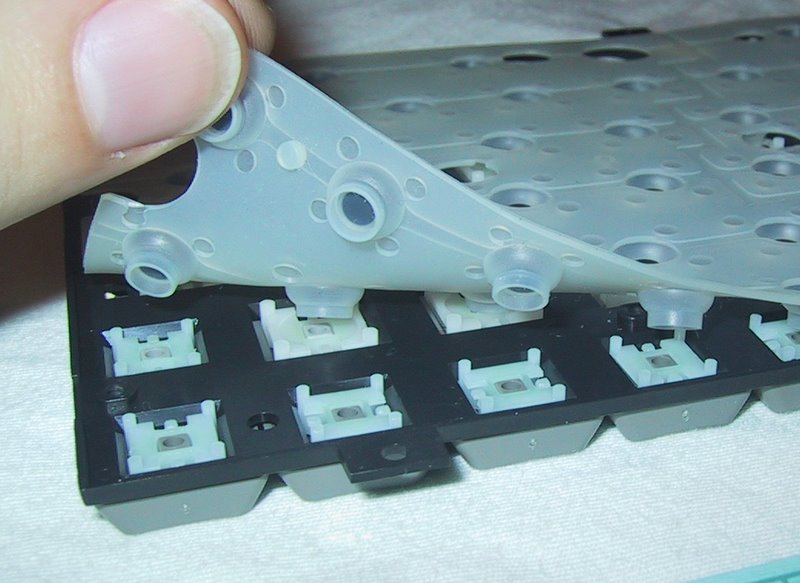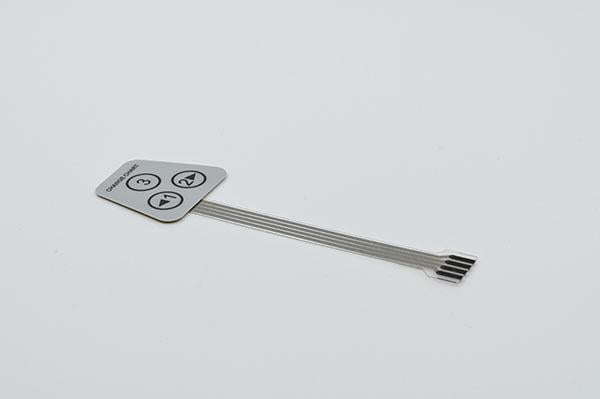Everything About Membrane Switch: Understanding Its Design and Capability
When you believe concerning the control interfaces in contemporary gadgets, membrane switches usually come to mind. Let's discover what sets membrane switches apart from other control systems.
What Are Membrane Layer Buttons?

Membrane buttons can additionally be customized relating to form, dimension, and graphics, enabling suppliers to produce distinct interfaces customized to certain products. Overall, membrane switches play a substantial function in enhancing customer experience throughout a broad selection of applications.
How Membrane Changes Work
When you push a secret on a membrane layer button, it turns on a straightforward yet efficient system. The top layer, often constructed from adaptable product, lowers onto a conductive layer below it. This activity bridges the void in between conductive traces, finishing an electrical circuit. As quickly as the circuit closes, it sends out a signal to the gadget's controller, which translates your input.
You'll notice that the tactile responses varies based upon the button design, offering either a soft click or a much more obvious action. When you launch the key, the membrane layer go back to its original setting, resuming the circuit and quiting the signal. This procedure happens nearly immediately, guaranteeing a responsive individual experience.
Membrane layer buttons are popular because of their toughness and resistance to dirt and moisture, making them optimal for different applications, from home home appliances to clinical tools. Understanding this operation aids you value their prevalent usage.
Secret Elements of Membrane Switches
Understanding the essential parts of membrane buttons is fundamental for grasping their performance and style. At the core, you'll discover the graphic overlay, which supplies the visual interface for individuals. Underneath that, there's a spacer layer that divides the circuit layers, making sure that they do not make contact till pushed. The circuit layer is where the magic takes place; it is composed of conductive traces that complete the circuit when you press the button. Another important aspect is the sticky support, permitting the button to stick to surfaces firmly. Ultimately, the safety layer shields against environmental elements and put on, expanding the button's life expectancy. Each part plays a substantial function in making certain reliable performance and customer interaction. By understanding these components, you'll gain insight right into just how membrane switches run and their importance in different applications.
Products Used in Membrane Change Design
The performance and toughness of membrane changes heavily depend upon the materials utilized in their layout. You commonly encounter polyester and polycarbonate as key substrates because of their superb stamina and versatility. These products resist scratches and chemicals, making them ideal for demanding environments.
The conductive layers commonly utilize silver or carbon, picked for their reliability and conductivity. membrane switch manufacturer. Silver offers premium performance, while carbon is an economical choice. For the overlay, you might consider a matte or shiny surface, relying on your aesthetic requirements and customer experience
Make particular to choose adhesives that stand up to ecological aspects like temperature and moisture. Selecting the appropriate materials will certainly assure your membrane button stands the examination of time.
Design Considerations for Membrane Layer Switches
While developing membrane layer buttons, it's vital to take right into account various aspects that influence their capability and individual experience. Begin by focusing on the design and button dimension; make specific they're user-friendly and simple to browse.
Don't ignore the visuals design; clear labeling and shade comparison are significant for presence. Validate your style suits environmental elements, like wetness or temperature level variants, which might impact efficiency. Bear in mind the importance of testing models with real individuals to collect responses and make essential modifications. This repetitive process assists you fine-tune the design, verifying it meets both practical and visual demands properly. By meticulously considering these elements, you'll create a membrane button that boosts use and complete satisfaction.
Applications of Membrane Buttons
Membrane layer buttons are functional elements discovered in different applications, from industrial equipment to consumer electronic devices. You'll see their effect in devices that call for resilient interfaces and in devices that take advantage of streamlined layouts. Comprehending these applications helps you appreciate the capability and functionality of membrane switches in everyday technology.
Industrial Equipment Usage
When you're aiming to enhance the functionality of industrial devices, membrane buttons provide a reliable solution that incorporates resilience with user-friendly style. These switches are excellent for extreme environments, supplying resistance to dust, dampness, and chemicals. You'll discover them in control panels for producing makers, cooling and heating systems, and medical tools, where precision and responsiveness are essential. Their reduced account means they fit flawlessly into numerous devices, conserving valuable room while maintaining ease of usage. With customizable graphics and backlighting options, you can develop an instinctive user Learn More interface for drivers, improving performance and safety. And also, their lengthy lifespan minimizes maintenance expenses, making them a clever investment for your commercial applications. Accept membrane buttons to enhance your advice procedures and improve total performance.
Consumer Electronics Assimilation
In the domain of consumer electronics, membrane layer buttons play a necessary duty in boosting individual communication and tool functionality. Membrane layer buttons likewise assure longevity and resistance to dust and wetness, extending the life expectancy of your electronic devices. By choosing membrane buttons, you improve not just the functionality however also the design of your devices, making everyday interactions smooth and enjoyable.
Benefits and Drawbacks of Membrane Buttons
While membrane layer switches offer a series of advantages, they additionally feature some disadvantages that you need to take into consideration. One considerable advantage is their portable design, making them excellent for space-constrained applications. They're likewise cost-efficient, offering a long lasting solution with a low manufacturing price. Additionally, their seamless surface is simple to tidy, improving hygiene in atmospheres like healthcare facilities.

Membrane switches can have a much shorter lifespan compared to mechanical switches, specifically under heavy use. They can also be much less responsive, which could influence customer comments throughout operation. Balancing these pros and cons will aid you figure out if membrane layer switches are the appropriate fit for your task.
Frequently Asked Inquiries
Exactly How Long Do Membrane Layer Changes Generally Last?
Membrane layer switches normally last between 5 to one decade, depending on use and environmental problems. You'll wish to evaluate aspects like wear, direct exposure to dampness, and temperature level changes to evaluate their long life properly.
Can Membrane Layer Switches Be Customized for Details Styles?
Yes, you can tailor membrane switches to fit particular designs (membrane switch manufacturer). You'll have the freedom to pick colors, shapes, and designs that match your project's requirements, guaranteeing they blend effortlessly with your overall visual
What Is the Cost Variety for Membrane Layer Switch Production?
The cost variety for membrane switch manufacturing usually drops in between $1 and $10 each, depending upon variables like design intricacy, quantity, and materials. You can obtain quotes from producers to discover the web link finest option.

Are Membrane Switches Over Water Resistant or Immune?
Membrane switches can be made to be waterproof or immune, depending on products used and construction techniques. If you need them for wet settings, ensure you specify those requirements throughout the style procedure.
How Do Membrane Layer Switches Over Compare to Traditional Buttons?
Membrane buttons are generally thinner and much more versatile than standard switches, using a streamlined style. They're frequently much easier to clean up and integrate, but might not provide the responsive feedback you're made use of to with mechanical options.
Final thought
